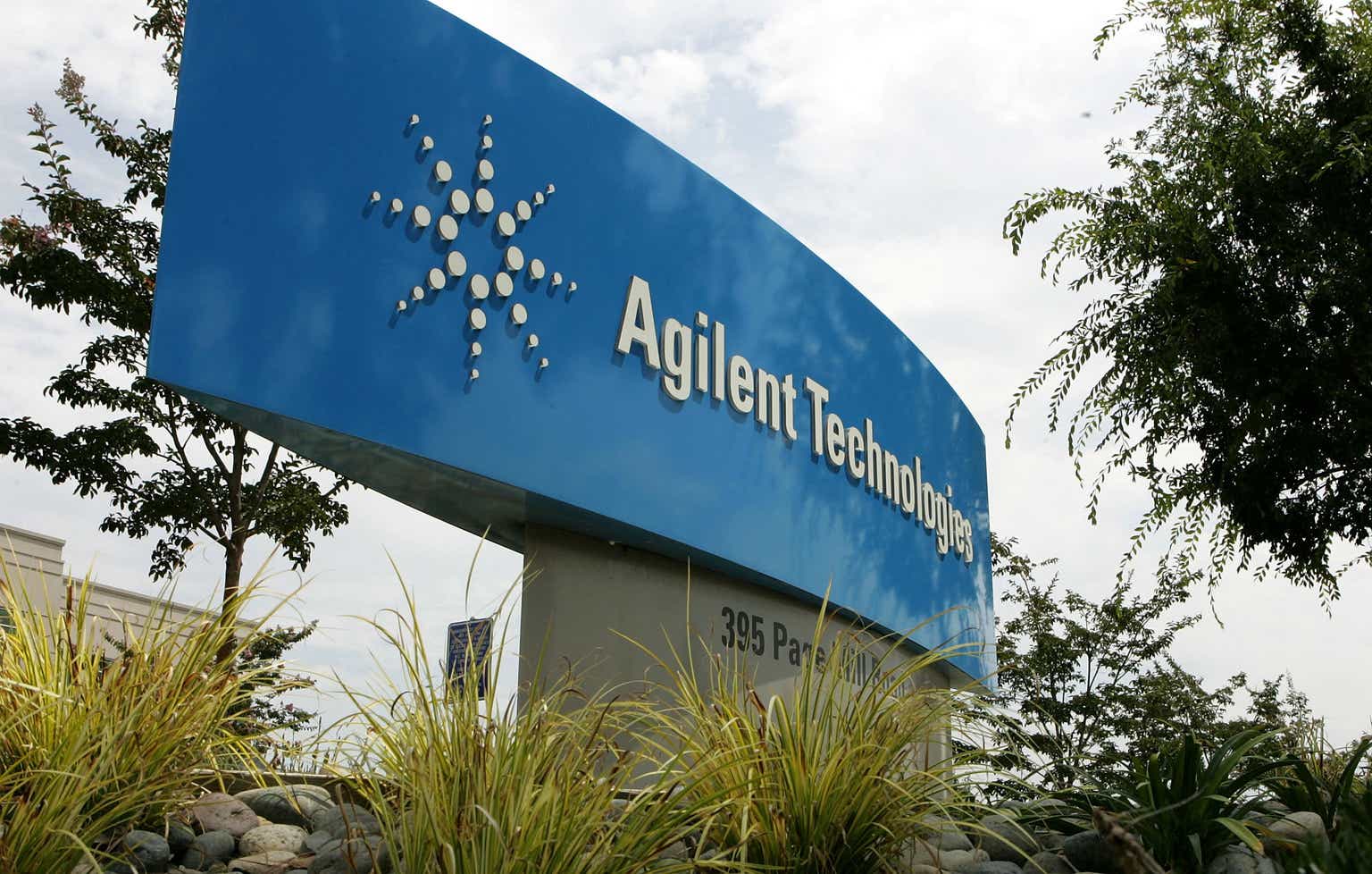In the summer of 2021, I called Agilent Technologies, Inc. (NYSE:A) an expensive stock. A great business, as a result of a sound positioning and strong capital allocation track record, alongside some bolt-on dealmaking, made me comfortable to be attracted to the name (at more reasonable valuations).
A Diversified Conglomerate
Back in 2021, the company was a large $5.3 billion diversified conglomerate with both steady and predictable businesses, generating operating margins at levels in the lower twenties.
The business was for nearly 50% comprised out of a key Life Science & Applied Markets Group, generated from instrumentation and information services for analytical laboratories settings. This is complemented by the Agilent Cross Lab, responsible for about a third of very profitable sales, with the Diagnostics and Genomics Group responsible for a fifth of sales, although it really has long-term rosy prospects.
In the pandemic year 2020, the company grew sales 3% to $5.3 billion, on which adjusted earnings of $1.0 billion were posted, equal to $3.28 per share. While GAAP earnings came in a dollar lower, the difference stems largely from amortization charges, which I am happy to adjust for.
Net debt of $760 million was no issue given the profitability, but the multiples were demanding as shares were trading at $138 per share, for a very high multiple. This was even the case as the company guided for a very strong 2021, a year in which sales were set to rise to $6.2 billion and adjusted earnings were seen at $4.11 per share, for a 33–34 times forward earnings multiple.
While I really was willing to attach a premium valuation given the quality of the business, and its positioning, the valuation was too high for me, even in that prevailing low-interest rate environment at the time. Hence, I decided to become a buyer based on a multiple in the high twenties.
What Happened?
As it turned out, Agilent Technologies, Inc. shares rallied to the $180 mark in the summer of 2021, then shares fell back to $120 last year amidst a general pullback in the market. Shares recovered to the $150 mark at the start of 2023, but have fallen to $120 at the moment of writing again, resulting in negative returns over a two-year time span.
In November 2022, the company posted its 2022 results with revenues up a solid 8% to $6.8 billion, despite a four-point headwind from a strong dollar. While sales have grown at a solid pace from 2021, the same has been the case for earnings as adjusted earnings rose as much as 20% to $5.22 per share, more than $1.5 billion in dollar terms. This was roughly equal to the reported net debt load, which consequently is very modest.
The company guided for a more modest pace of growth in 2023 with sales seen between $6.9 and $7.0 billion, although adjusted earnings per share should improve further to a midpoint of $5.65 per share.
Based on this outlook, shares started the year at $150, the forward multiple has fallen to about 26-27 times earnings, lower than 2021, but not low enough for me given the interest rate environment which has lifted the bar for all investment categories. Nonetheless, the board authorized a big $2 billion share buyback program at the start of this year. A week later, the company announced a massive $725 million investment into an expansion of its state-of-the-art manufacturing plant for nucleic acid-based therapeutics.
In February, the company posted a solid 5% increase in reported sales to $1.75 billion, even amidst a five-point headwind from the strong dollar. Non-GAAP earnings rose by 13% to $1.37 per share. On the back of the solid first quarter, the company hiked the sales guidance to $7.03-$7.10 billion, with adjusted earnings now seen up to $5.65-$5.70 per share.
Other than two bolt-on deals being announced during the first quarter, it has been quiet until the company posted its second-quarter results in May. Revenues of $1.72 billion were up nearly 7% on a reported basis, as the growth acceleration stems from a weaker headwind from currencies. Non-GAAP earnings rose fourteen cents to $1.27 per share. That is part of the bad news, as the company cut the full-year sales guidance to $6.93-$7.03 billion (actually in line with the initial guidance) with adjusted earnings now seen between $5.60 and $5.65 per share.
The net debt load of $1.4 billion is pretty flat, despite the two bolt-on deals being announced, as the company bought back some shares at a reasonable pace.
What Now?
Amidst the shortfall in the guidance, Agilent Technologies, Inc. shares have fallen to $120 per share, and based on the adjusted earnings guidance, multiples have compressed all the way from levels in the thirties to about 21 times here, the lowest multiple we have seen in a fairly long time.
The Agilent Technologies, Inc. stock multiple has come down a lot, all while leverage is very modest, as the set-up is improving rapidly in my view. In fact, Agilent Technologies, Inc. shares trade near my desired entry targets given where interest rates are. Therefore, I am looking for a further move lower towards the $100 mark, although I am happy to start nibbling on Agilent Technologies, Inc. shares at $110 per share here.
Read the full article here




